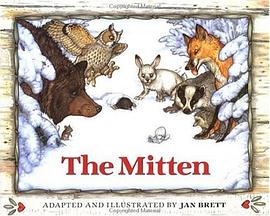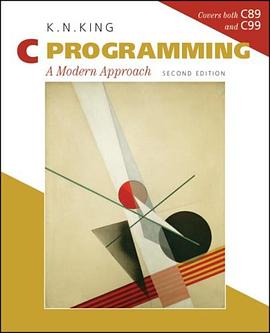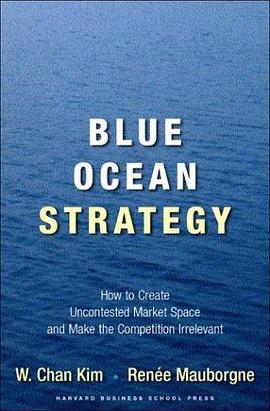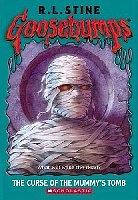導讀
序言
術語錶
第一部分 研究的基本問題
第1章 什麼是科學心理學 4
1.1 對大韆世界的探索 4
1.1.1 社會惰化 4
1.1.2 好奇心:科學的源泉 6
1.2 知識的來源 6
信念的確立 6
1.3 科學解釋的性質 8
1.3.1 什麼是理論 8
1.3.2 歸納法與演繹法 9
1.3.3 從理論到假設 12
1.3.4 評估理論 14
1.3.5 中介變量 15
1.3.6 徜徉於心理學理論中的“狐狸”
與“刺蝟” 17
1.4 心理科學 17
心理學與現實世界 18
小結 21
討論題目 21
網絡資源 22
第2章 研究技術:觀察與相關 25
2.1 自然觀察法 26
2.1.1 我們觀察什麼 28
2.1.2 反應性 29
2.1.3 個案研究 31
2.1.4 調查研究 32
2.1.5 自然觀察法的優缺點 33
2.2 相關研究法 35
2.2.1 列聯研究 35
2.2.2 相關研究 37
2.2.3 相關係數 37
2.2.4 復相關 42
2.2.5 原因:一個注解 44
小結 46
討論題目 47
網絡資源 48
實驗室資源 48
第3章 研究技術:實驗 51
3.1 什麼是實驗 52
3.1.1 實驗的優點 52
3.1.2 為什麼做實驗 53
3.2 變量 54
3.2.1 自變量 54
3.2.2 因變量 55
3.2.3 控製變量 56
3.2.4 變量命名 56
3.2.5 多個自變量 57
3.2.6 多個因變量 61
3.3 實驗設計 61
3.3.1 被試間設計 62
3.3.2 被試內設計 62
3.3.3 小樣本設計 64
3.3.4 混閤設計 64
3.3.5 控製條件 64
3.3.6 陷阱 65
3.3.7 準實驗 68
3.4 從問題到實驗 72
3.5 數據 73
3.5.1 獲得數據 73
3.5.2 分析數據 74
3.5.3 報告數據 75
小結 75
討論題目 76
網絡資源 77
第4章 心理學研究的道德 80
4.1 以人為被試的研究 80
4.1.1 知情同意與欺瞞 83
4.1.2 退齣研究的自由 84
4.1.3 免遭傷害的保護和研究通告 84
4.1.4 消除有害後果 85
4.1.5 保密 85
4.2 以動物為被試的研究準則 86
4.2.1 反對以動物作為研究對象的觀點 86
4.2.2 支持以動物作為研究對象的觀點 87
4.2.3 研究中使用動物的指導原則 88
4.3 科學欺騙 89
4.4 道德實踐的監督 91
小結 92
討論題目 92
網絡資源 93
建議閱讀材料 93
課後練習:理解並記住知情同意協議 94
第5章 如何閱讀和撰寫研究報告 97
5.1 如何進行文獻檢索 98
5.2 論文的各部分 98
5.2.1 題目和作者 98
5.2.2 摘要 99
5.2.3 引言 99
5.2.4 方法 99
5.2.5 結果 99
5.2.6 討論 101
5.2.7 參考文獻 101
5.3 要求嚴格的讀者使用的核對清單 102
5.3.1 引言 102
5.3.2 方法 102
5.3.3 結果 103
5.3.4 討論 103
5.3.5 核對清單的小結 104
5.4 期刊論文的樣例 105
5.5 研究報告撰寫 113
5.5.1 格式 114
5.5.2 文稿樣例 116
5.5.3 文風 116
5.5.4 文章發錶 140
小結 141
網絡資源 142
實驗室資源 142
課後練習:文獻檢索 142
第二部分 實驗心理學的
基本原則與實踐
第6章 心理物理學 148
測量感覺 148
6.1 實驗主題與研究範例 150
操作定義:閾限 150
變量介紹 151
6.2 實驗主題與研究範例 162
量錶:費希納定律和史蒂文斯定律 162
6.3 實驗主題與研究範例 166
小樣本設計:心理物理法 166
從問題到實驗 168
鴿子有視覺閾限嗎 168
如何測量鴿子的視覺閾限 168
小結 168
討論題目 169
網絡資源 169
課後練習:韋伯定律 169
第7章 知覺 173
知覺問題 173
直接和間接知覺 173
意識和知覺 175
變量介紹 178
7.1 實驗主題與研究範例 179
言語報告:無意識知覺 179
7.2 實驗主題與研究範例 186
會聚操作:無意識知覺和有意識知覺 186
從問題到實驗 191
顔色-距離錯覺 191
小結 193
討論題目 193
網絡資源 194
實驗室資源 194
課後練習:斯特魯效應 194
第8章 注意和反應時 197
反應時ABC 197
8.1 實驗主題與研究範例 199
因素混淆:單純嵌入 199
變量介紹 200
8.2 實驗主題與研究範例 203
因變量的選擇:速度-準確性權衡 203
8.3 實驗主題與研究範例 208
交互作用:認知控製 208
從問題到實驗 210
測量注意 210
小結 211
討論題目 211
網絡資源 212
課後練習:速度-準確性權衡 212
第9章 條件反射與學習 215
條件反射的類型 216
經典性條件反射:能憶起巴甫洛夫的
名字嗎 216
工具性(操作性)條件反射 218
變量介紹 220
9.1 實驗主題與研究範例 221
被試內與被試間設計:刺激強度 221
9.2 實驗主題與研究範例 226
平衡:同時對比 226
9.3 實驗主題與研究範例 231
小樣本設計:兒童的行為問題 231
從問題到實驗 238
部分強化消退效應 238
小結 240
討論題目 241
網絡資源 242
課後練習:對強化結果的瞭解 242
第10章 記憶與遺忘 245
艾賓浩斯的貢獻—當記憶還年輕的時候 246
記憶的類型 249
變量介紹 250
10.1 實驗主題與研究範例 251
量錶衰減效應:通道差異 251
10.2 實驗主題與研究範例 255
結果的普遍性:加工水平 255
10.3 實驗主題與研究範例 262
交互作用效應:內隱與外顯記憶測驗 262
從問題到實驗 271
讀優於聽嗎? 271
小結 273
討論題目 274
網絡資源 274
實驗室資源 274
課後練習;記住9·11恐怖襲擊 275
第11章 思維與問題解決 278
兩種思維方法 280
桑代剋的嘗試與錯誤學習 280
柯勒的黑猩猩的頓悟 280
11.1 實驗主題與研究範例 281
信度與重復:類比推理 281
變量介紹 283
11.2 實驗主題與研究範例 290
實驗控製:功能固著 290
11.3 實驗主題與研究範例 294
言語報告:判斷中的過於自信 294
從問題到實驗 298
問題解決中的醞釀期 298
小結 300
討論題目 301
網絡資源 302
課後練習:證真偏見 302
第12章 個彆差異與發展 305
個彆差異的研究途徑 306
個彆差異的方法學途徑 306
引起個彆差異的變量 307
變量介紹 309
12.1 實驗主題與研究範例 310
測量信度:智力與發展的研究設計 310
12.2 實驗主題與研究範例 316
操作定義:人工智能 316
12.3 實驗主題與研究範例 321
迴歸假象:教育評價 321
從問題到實驗 325
動機與情緒在智力活動中起什麼作用 325
小結 328
討論題目 329
網絡資源 329
課後練習:迴歸假象演示 330
第13章 社會影響 333
社會心理學的起源 334
13.1 實驗主題與研究範例 336
實驗控製:服從權威 336
變量介紹 337
鼓勵服從的條件 341
13.2 實驗主題與研究範例 344
要求特徵和實驗者偏差:催眠 344
13.3 實驗主題與研究範例 347
現場研究:旁觀者乾預 347
13.4 實驗主題與研究範例 351
選擇因變量:測量刻闆與偏見 351
從問題到實驗 353
其他人在場如何影響個體在某一任務上
的成績 353
小結 355
討論題目 356
網絡資源 357
實驗室資源 357
課後練習:置身實驗的難度 357
第14章 環境心理學 360
科學是通嚮真理的唯一途徑嗎 361
發現城市生活的真諦 362
14.1 實驗主題與研究範例 364
結果的推廣: 擁擠 364
變量介紹 365
14.2 實驗主題與研究範例 371
準實驗:噪聲與認知績效 371
14.3 實驗主題與研究範例 372
道德問題:欺騙和欺瞞 372
從問題到實驗 374
暴露於噪聲中有害處嗎 374
小結 376
討論題目 376
網絡資源 376
實驗室資源 377
課後練習:噪聲與記憶 377
第15章 人的因素 380
人的因素和人的行為 381
定義 381
用戶第一 381
生命的價值 382
變量介紹 383
15.1 實驗主題與研究範例 384
小樣本設計:動態視敏度 384
15.2 實驗主題與研究範例 386
因變量的選擇:心理負荷 386
15.3 實驗主題與研究範例 393
現場研究:中央高位刹車燈 393
從問題到實驗 394
測量飛行員空中的心理負荷 394
小結 395
討論題目 395
網絡資源 396
課後練習:理解交通指示牌的含義 396
附錄A 實驗心理學:曆史迴顧 400
A.1 實驗心理學的起源:哲學與生理學 400
赫爾姆霍茨的貢獻 402
A.2 早期的科學心理學 402
A.2.1 韋伯 403
A.2.2 費希納 403
A.2.3 馮特 404
A.2.4 艾賓浩斯 404
A.3 心理學流派 404
A.3.1 構造主義:心理生活的結構 404
A.3.2 機能主義:心理的機能 405
A.3.3 行為主義:拒絕心理的解釋 406
A.3.4 格式塔心理學:整體知覺 407
A.4 一些現代趨嚮 408
A.4.1 第二次世界大戰與心理學的擴展 408
A.4.2 認知心理學:心理的迴歸 408
A.4.3 認知神經科學:大腦的十年 409
A.4.4 專門化 410
小結 412
網絡資源 413
參考文獻 414
Contents
PART 1 FUNDAMENTALS OF RESEARCH
Chapter 1: Explanation in Scientific Psychology 4
Making Sense of the World 4
Sources of Knowledge 6
The Nature of the Scientific Explanation 8
The Science of Psychology 17
Summary 21
Discussion Questions 21
Web Connections 22
Chapter 2: Research Techniques: Observation and Correlation 25
Naturalistic Observation 26
The Relational Approach 35
Summary 46
Discussion Questions 47
Web Connections 48
Laboratory Resource 48
Chapter 3: Research Techniques: Experiments 51
What is an Experiment? 52
Variables 54
Experimental Designs 61
Data 73
From Problem To Experiment 73
Summary 75
Discussion Questions 76
Web Connections 77
Chapter 4: Ethics in Psychological Research 80
Research with Human Participants 80
Ethics in Research with Animals 86
Scientific Fraud 89
Monitoring Ethical Practices 91
Summary 92
Discussion Questions 92
Web Connections 93
Suggested Readings 93
Psychology in Action: Understanding and Remembering Consent Forms 94
Chapter 5: How to Read and Write Research Reports 97
How to do a Literature Search 98
The Parts of an Article 98
Checklist for the Critical Reader 102
A Sample Journal Article 105
Writing a Research Report 113
Summary 141
Web Connections 142
Laboratory Resource 142
Psychology in Action: A Literature Search 142
PART 2 PRINCIPLES AND PRACTICES
OF EXPERIMENTAL PSYCHOLOGY
Chapter 6: Psychophysics 148
Measuring Sensations 148
6.1 Experimental Topics and Research Illustrations 150
Operational Definition: Thresholds 150
Introducing the Variables 151
6.2 Experimental Topics and Research Illustrations 162
Measurement Scales: Fechner誷 Law and Stevens?Law 162
6.3 Experimental Topics and Research Illustrations 166
Small-n Design: Psychophysical Methods 166
From Problem to Experiment: The Nuts and Bolts 168
Do Pigeons Have Vision Thresholds? 168
How Can We Measure a Pigeon誷 Visual Threshold? 168
Summary 168
Discussion Questions 169
Web Connections 169
Psychology in Action: Weber誷 Law 169
Chapter 7: Perception 173
Issues in Perception 173
Direct and Indirect Perception 173
Awareness and Perception 175
Introducing the Variables 178
Dependent Variables 178
Independent Variables 178
Control Variables 178
7.1 Experimental Topics and Research Illustrations 179
Verbal Report: Perception without Awareness 179
7.2 Experimental Topics and Research Illustrations 186
Converging Operations: Perception without Awareness and Perception with Explicit Awareness 186
From Problem to Experiment: The Nuts and Bolts 191
The Color-Distance Illusion 191
Summary 193
Discussion Questions 193
Web Connections 194
Laboratory Resource 194
Psychology in Action: The Stroop Eddect 194
Chapter 8: Attention and Reaction Time 197
The ABC of Reaction Time 197
8.1 Experimental Topics and Research Illustrations 199
Confounding: Pure Insertion 199
Introducing the Variables 200
8.2 Experimental Topics and Research Illustrations 203
Selection of the Dependent Variable: Speed-Accuracy Trade-Off 203
8.3 Experimental Topics and Research Illustrations 208
Interaction Effects: Cognitive Control 208
From Problem to Experiment: The Nuts and Bolts 210
Measuring Attention 210
Summary 211
Discussion Questions 211
Web Connections 212
Psychology in Action: Speed-Accuracy Trade-off 212
Chapter 9: Conditioning and Learning 215
Types of Conditioning 216
Classical Conditioning: Does the Name Pavlov Ring a Bell? 216
Instrumental (Operant) Conditioning 218
Introducing the Variables 220
9.1 Experimental Topics and Research Illustrations 221
Within- and Between-Subjects Designs: Stimulus Intensity 221
9.2 Experimental Topics and Research Illustrations 226
Counterbalancing: Simultaneous Contrast 226
9.3 Experimental Topics and Research Applications 231
Small-n Designs: Behavior Problems in Children 231
From Problem to Experiment: The Nuts and Bolts 238
The Partial Reinforcement Extinction Effect 238
Summary 240
Discussion Questions 241
Web Connections 242
Psychology in Action: Knowledge of Results as Reinforcement 242
Chapter 10: Remembering and Forgetting 245
Ebbinghaus誷 Contribution—When Memory was Young 246
Varieties of Memory 249
Introducing the Variables 250
10.1 Experimental Topics and Research Illustrations 251
Scale Attenuation: Modality Differences 251
10.2 Experimental Topics and Research Illustrations 255
Generality of Results: Levels of Processing 255
10.3 Experimental Topics and Research Illustrations 262
Interaction Effects: Implicit and Explicit Memory Tests 262
From Problem to Experiment:The Nuts and Bolts 271
Which Is More Effective, Reading or Listening? 271
Summary 273
Discussion Questions 274
Web Connections 274
Laboratory Resources 274
Psychology in Action: Remembering The 9/11 Terrorist Attacks 275
Chapter 11: Thinking and Problem Solving 278
Two Approaches to Th inking 280
Thorndike誷 Trial-and-Error Learning 280
Insight in K歨ler誷 Chimpanzees 280
11.1 Experimental Topics and Research Illustrations 281
Reliability and Replication: Analogical Reasoning 281
Introducing the Variables 283
11.2 Experimental Topics and Research Illustrations 290
Experimental Control: Functional Fixedness 290
11.3 Experimental Topics and Research Illustrations 294
Verbal Reports: Overconfidence in Judgments 294
From Problem to Experiment: The Nuts and Bolts 298
Incubation in Problem Solving 298
Summary 300
Discussion Questions 301
Web Connections 302
Psychology in Action: Confirmation Bias 302
Chapter 12: Individual Differences and Development 305
Approaches to Individual Differences 306
Methodological Approaches to Individual Differences 306
Variables Leading to Individual Differences 307
Introducing the Variables 309
12.1 Experimental Topics and Research Illustrations 310
Reliability of Measures: Intelligence and Developmental Research Designs 310
12.2 Experimental Topics and Research Illustrations 316
Operational Definitions: Intelligence 316
12.3 Experimental Topics and Research Illustrations 321
Regression Artifacts: Educational Assessment 321
From Problem to Experiment: The Nuts and Bolts 325
What Roles Do Motivation and Emotion Play in Intellectual Performance? 325
Summary 328
Discussion Questions 329
Web Connections 329
Psychology in Action: A Demonstration of Regression Artifacts 330
Chapter 13: Social Psychology 333
The Origins of Social Psychology 334
13.1 Experimental Topics and Research Illustrations 336
Experimental Control: Obedience to Authority 336
Introducing The Variables 337
Conditions Encouraging Obedience 341
13.2 Experimental Topics and Research Illustrations 344
Demand Characteristics and Experimenter Bias: Hypnosis 344
13.3 Experimental Topics and Research Illustrations 347
Field Research: Bystander Intervention 347
13.4 Experimental Topics and Research Illustrations 351
Choosing the Dependent Variable: Measuring Stereotypes and Prejudice 351
From Problem to Experiment: The Nuts and Bolts 353
How Does the Presence of Other People Affect an Individual誷 Performance on a Task? 353
Summary 355
Discussion Questions 356
Web Connections 357
Laboratory Resources 357
Psychology in Action: The Power of Being in an Experiment 357
Chapter 14: Environmental Psychology 360
Is Science the Only Path to Truth? 361
Discovering the Truth about City Life 362
14.1 Experimental Topics and Research Illustrations 364
Generalization of Results: Crowding 364
Introducing the Variables 365
14.2 Experimental Topics and Research Illustrations 371
Quasi-Experiments: Noise and Cognitive Performance 371
14.3 Experimental Topics and Research Illustrations 372
Ethical Issues: Deception and Concealment 372
From Problem to Experiment: The Nuts and Bolts 374
Is Exposure to Noise Bad for You? 374
Summary 376
Discussion Questions 376
Web Connections 376
Laboratory Resources 377
Psychology in Action: Noise and Memory 377
Chapter 15: Human Factors 380
Human Factors and Human Behavior 381
Definition 381
Honor Thy User 381
The Value of Life 382
Introducing the Variables 383
15.1 Experimental Topics and Research Illustrations 384
Small-n Design: Dynamic Visual Acuity 384
15.2 Experimental Topics and Research Illustrations 386
Selection of Dependent Variable: Mental Workload 386
15.3 Experimental Topics and Research Illustrations 393
Field Research: The Centered High-Mounted Brake Light 393
From Problem to Experiment: The Nuts and Bolts 394
Measure Pilot Mental Workload in Flight 394
Summary 395
Discussion Questions 395
Web Connections 396
Psychology in Action: Understanding Traffic Sign Symbols 396
Appendix A: Experimental Psychology: A Historical Sketch 400
Origins of Experimental Psychology: Philosophy and Physiology 400
Early Scientific Psychology 402
Schools of Psychology 404
Some Modern Trends 408
Summary 412
Web Connections 413
References 414
· · · · · · (
收起)






















